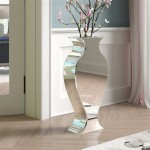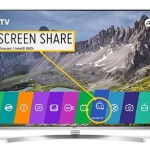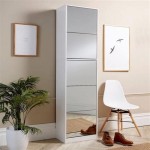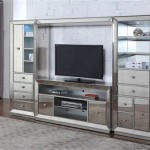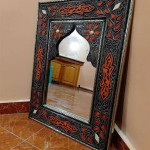Two-Way Mirrors in Changing Rooms: Separating Fact from Fiction
Concerns regarding privacy in retail changing rooms have led to anxieties about the use of two-way mirrors. This article aims to clarify the realities and misconceptions surrounding this issue, providing information to help consumers understand the differences between legitimate mirrors and potential privacy violations.
Understanding Two-Way Mirrors
A two-way mirror, also known as a one-way mirror or half-silvered mirror, is a piece of glass coated with a thin metallic layer. This layer reflects some light and allows some to pass through. When one side is brightly lit and the other is dark, the mirror appears reflective on the brighter side and transparent on the darker side. This principle is utilized in various settings, including observation rooms, security surveillance, and some specialized architectural applications.
Legitimate Uses of Mirrors in Retail
Standard mirrors in retail changing rooms serve the fundamental purpose of allowing customers to see how clothes fit. These mirrors are typically backed with a solid, opaque material, preventing any possibility of see-through visibility. The use of regular mirrors is essential for customer satisfaction and the smooth operation of the retail environment.
Identifying a Potential Two-Way Mirror
While the use of two-way mirrors in changing rooms is rare and often illegal, it's crucial to be aware of the signs that might indicate their presence. The following points detail methods for discerning a regular mirror from a potential two-way mirror:
* The Fingernail Test: If you press your fingernail directly against the surface of a regular mirror, there will be a noticeable gap between your fingernail and its reflection. With a two-way mirror, the reflection will appear to touch the fingernail due to the thinness of the reflective layer. This is not foolproof however, as protective coatings on regular mirrors can sometimes give a similar result. * Lighting Differences: Observe the lighting conditions on both sides of the mirror. A significantly brighter changing room compared to the adjacent area might suggest a two-way mirror setup, as this lighting difference is necessary for the mirror to function as intended. * The Observation Room Check: Look for any unusual signs in the area surrounding the changing rooms. The presence of unexplained doors, ventilation grilles, or unusual wall protrusions could indicate a concealed observation space. * Sound Test: Knock on the mirror surface. A regular mirror, backed by a solid material, will produce a dull thud. A two-way mirror, potentially leading to an empty space, might produce a slightly hollower or reverberant sound. * View from the Other Side: If possible and safe to do so, try to view the mirror from the other side (e.g., from the adjacent store area). If the mirror appears transparent from the other side under specific lighting conditions, it’s a two-way mirror. * Seek Store Staff Assistance: If you have concerns about a mirror, don't hesitate to ask a store employee for clarification. Legitimate retailers should be transparent about their fitting room setups and willing to address customer concerns.
Legal Implications and Reporting Suspicions
The use of two-way mirrors for surreptitious observation in changing rooms is considered a serious privacy violation and is illegal in many jurisdictions. If you suspect a two-way mirror is being used inappropriately, you should report your concerns to the store management and, if necessary, the local authorities.
Protecting Your Privacy
Regardless of the presence or absence of two-way mirrors, it's prudent to take steps to protect your privacy in changing rooms:
* Be Observant: Pay attention to your surroundings and look for any unusual features that might raise concerns. * Cover Up: Avoid fully undressing if you feel uncomfortable. Utilize undergarments or other clothing items to maintain a level of privacy. * Report Suspicious Activity: Don't hesitate to report any unusual or concerning observations to store staff or law enforcement.
The Role of Technology and Misinformation
The spread of misinformation online can contribute to unnecessary anxieties. It’s crucial to rely on credible sources of information when assessing the risks associated with two-way mirrors. While the possibility of encountering a two-way mirror exists, it is not a widespread practice in reputable retail establishments.
Industry Standards and Regulations
While specific regulations regarding changing room mirrors may vary by jurisdiction, many retail establishments adhere to industry best practices that prioritize customer privacy. These practices often include the use of solid-backed mirrors and transparent communication about changing room policies.
How You Do A Quick Check For Cams Or Two Way Mirrors In Trial Rooms Quora

How To Spot A Two Way Mirror Snopes Com

How To Tell If A Mirror Is Two Way Or Not 8 Steps With Pictures

Women Safety Difference Between Mirror And 2 Way Glass

How To Tell If A Mirror Is Two Way Or Not 8 Steps With Pictures

Unions Say Some S Here Use Two Way Mirrors In Dressing Rooms To Curb Rise Lifting The New York Times

5 Ways To Quickly Check If There S A In Your Dressing Room Bright Side
A Mirror Or 2 Way Glass

No Space Leave This Place Finger Test Won T Always Tell The Difference Between Real And Two Way Mirrors Check

How To Detect A Two Way Mirror Fingernail Test
